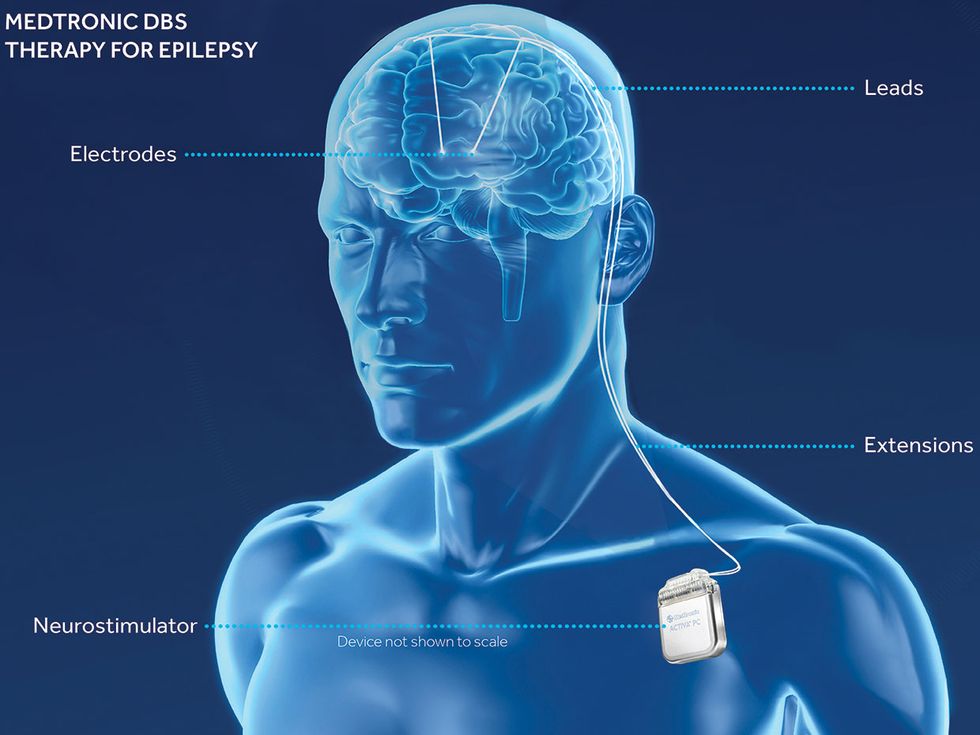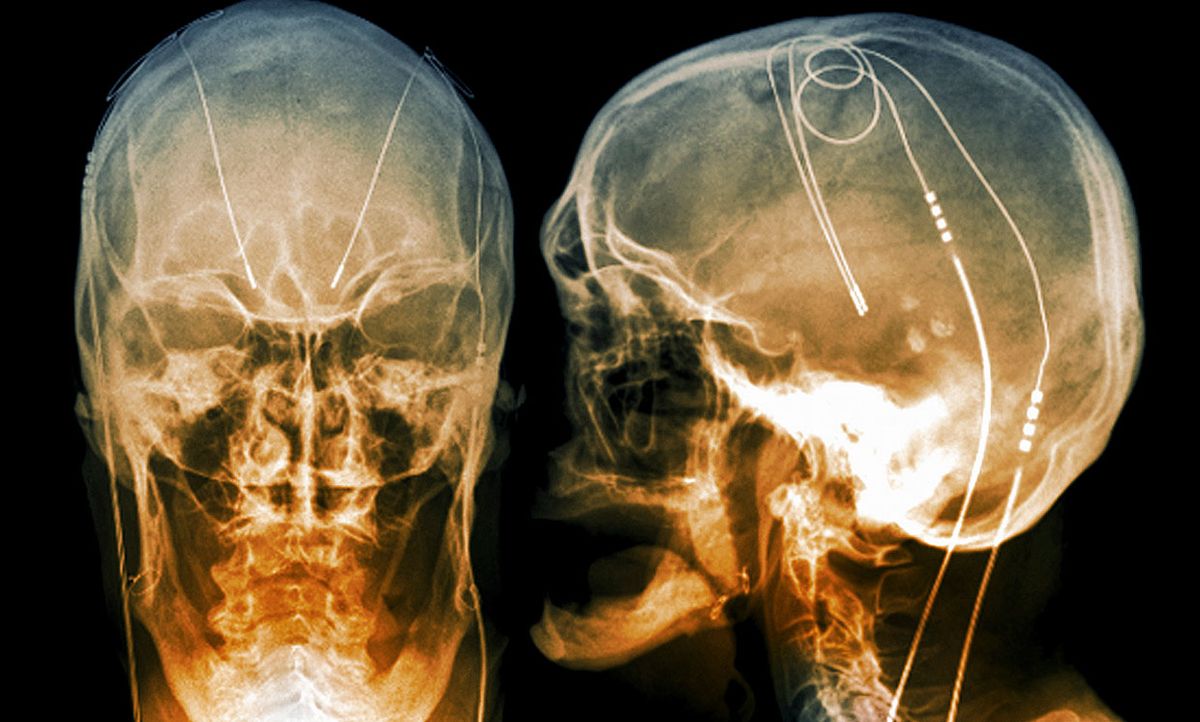It sounds like science fiction, but a neural implant could, many years from now, read and edit a person's thoughts. Neural implants are already being used to treat disease, rehabilitate the body after injury, improve memory, communicate with prosthetic limbs, and more.
The U.S. Department of Defense and the U.S. National Institutes of Health (NIH) have devoted hundreds of millions of dollars in funding toward this sector. Independent research papers on the topic appear in top journals almost weekly.
Here, we describe types of neural implants, explain how neural implants work, and provide examples demonstrating what these devices can do.
What is a neural implant?
A neural implant is a device placed inside the body that interacts with neurons.
Neurons are cells that communicate in the language of electricity. They fire electrical impulses in particular patterns, kind of like Morse code. An implant is a human-made device that is placed inside the body via surgery or an injection.

A neural implant, then, is a device—typically an electrode of some kind—that's inserted into the body, comes into contact with tissues that contain neurons, and interacts with those neurons in some way.
With these devices, it's possible to record native neural activity, allowing researchers to observe the patterns by which healthy neural circuits communicate. Neural implants can also send pulses of electricity to neurons, overriding native firing patterns and forcing the neurons to communicate in a different way.
In other words, neural implants enable scientists to hack into the nervous system. Call it neuromodulation, electroceuticals, or bioelectronics—interventions involving neural implants have the potential to become tremendously powerful medical tools.
Consider the functions of the nervous system: It controls thinking, seeing, hearing, feeling, moving, and urinating, to name a few. It also controls many involuntary processes such as organ function and the body's inflammatory, respiratory, cardiovascular, and immune systems.
“Anything that the nervous system does could be helped or healed by an electrically active intervention—if we knew how to do it," says Gene Civillico, a neuroscientist at the NIH, who runs the agency's peripheral nerve stimulation funding program SPARC.
How are neural implants used?
One of the most established clinical uses of neural implants is in a treatment called deep brain stimulation, or DBS. In this therapy, electrodes are surgically placed deep into the brain where they electrically stimulate specific structures in an effort reduce the symptoms of various brain-based disorders.

The U.S. Food and Drug Administration (FDA) first approved the use of DBS in 1997 for essential tremor. Since then, the FDA or other global regulators have approved DBS for Parkinson's disease, dystonia, tinnitus, epilepsy, obsessive-compulsive disorder, and neuropathic pain. DBS is also being investigated as a treatment for Tourette syndrome and psychiatric disorders such as depression. It is estimated that more than 150,000 people globally have received a DBS implant.
Researchers have also put a great deal of time into manipulating the vagus nerve using neural implants. The vagus nerve connects most of our key organs to the brain stem, and researchers are hacking this communication superhighway in an effort to treat heart failure, stroke, rheumatoid arthritis, Crohn's disease, epilepsy, type 2 diabetes, obesity, depression, migraine, and other ailments.
Some of the most emotionally moving experiments involving neural implants have come with the stimulation of the spinal cord, also known as epidural stimulation. The treatment has enabled a handful of people with paralysis in their lower bodies to move, stand, and even walk a short distance for the first time since sustaining spinal cord injuries.
Perhaps no neuromodulation research has captivated the public's imagination more than mind-controlled prostheses. These systems enable amputees to control robotic hands, arms, and legs—in rudimentary ways—using their thoughts. This can be accomplished with a neural implant in the brain or in the extremity above the amputation. Some of these robotic limbs can also provide sensory feedback by stimulating nerves just above the amputation, giving the user a sense of what he or she is touching.
The BrainGate research team has used neural implants to enable people with quadriplegia to control computer cursors and robot arms.Video: BrainGate.org
And then there's the stuff that comes across like science fiction. Researchers have successfully enhanced people's memory capability for specific tasks by stimulating brain structures in precise ways. Quadriplegic individuals with brain implants have operated computers and typed sentences using only their thoughts. There's an algorithm that can determine a person's mood based on brain activity alone. A couple of companies have successfully brought to market implants that correct neural communication between the eye and the brain. Elon Musk says his company Neuralink plans to sync our brains with AI.
What's next for neural implants?
The invasiveness of any implant limits its use. It's hard to justify brain or spinal surgery unless a person is in severe medical need. So engineers are constantly inventing better devices that reach deep in the body with less impact on tissues.
“Engineers are continually pushing the boundaries for what's technically possible," says David McMullen, program chief of the neuromodulation and neurostimulation program at the U.S. National Institute of Mental Health. “It's all about decreasing the surgical burden, increasing the chronic nature of the implant and constantly trying to get ever smaller electrodes that cover a wider area of brain," he says.
Engineers have concocted dust-sized brain implants, electrodes that climb nerves like a vine, electrodes made from flexible materials such as a nanoelectronic thread, stent-like electrodes, or “stentrodes," that can get to the brain via blood vessels and record electrical activity, injectable electronic mesh made from silicon nanowires, electrodes that can be injected into the body as a liquid and then harden into a stretchy taffy-like substance, and more.
“Stentrodes" could be inserted into the brain via blood vessels, obviating the need for open-brain surgery.
Neuromodulation can even be performed non-invasively using electrodes or magnetic coils placed on or near the skin. The strategy has proven effective for some conditions, although so far it doesn't have the specificity or efficacy of implants.
But these innovative devices only get us so far. “There's a misconception that the obstacles [to neuromodulation] are mainly technical, like the only reason we don't have thought-controlled devices is because nobody has made a flexible-enough electrode yet," says Civillico at NIH.
Researchers still need a basic understanding of the physiology of neural circuits, says Civillico. They need maps of how neurons are communicating, and the specific effects of these circuits on the body and brain. Without these maps, even the most innovative implants are effectively shooting electrical impulses into the dark.
- A New Carbon Material for Better Bioelectronics - IEEE Spectrum ›
- Exclusive Q&A: Neuralink’s Quest to Beat the Speed of Type - IEEE Spectrum ›
- Brain Chip Combines Electrodes and Microfluidics - IEEE Spectrum ›
- Scientists Control Mice Behavior With Near-Infrared Rays ›
- Eavesdropping on the Brain with 10,000 Electrodes - IEEE Spectrum ›
- Stretchable Artificial Nerves Help Restore Motion in Mice - IEEE Spectrum ›
- Machine Learning Hunts for Chronic Pain's Signature - IEEE Spectrum ›
- Record Broken: Decoding Words From Brain Signals - IEEE Spectrum ›
- Superficial Brain Implant Could Have a Deep Impact - IEEE Spectrum ›
Emily Waltz is the power and energy editor at Spectrum. Prior to joining the staff in January 2024, Emily spent 18 years as a freelance journalist covering biotechnology, primarily for the Nature research journals and Spectrum. Her work has also appeared in Scientific American, Discover, Outside, and the New York Times. Emily has a master's degree from Columbia University Graduate School of Journalism and an undergraduate degree from Vanderbilt University. With every word she writes, Emily strives to say something true and useful. She posts on Twitter/X @EmWaltz and her portfolio can be found on her website.



